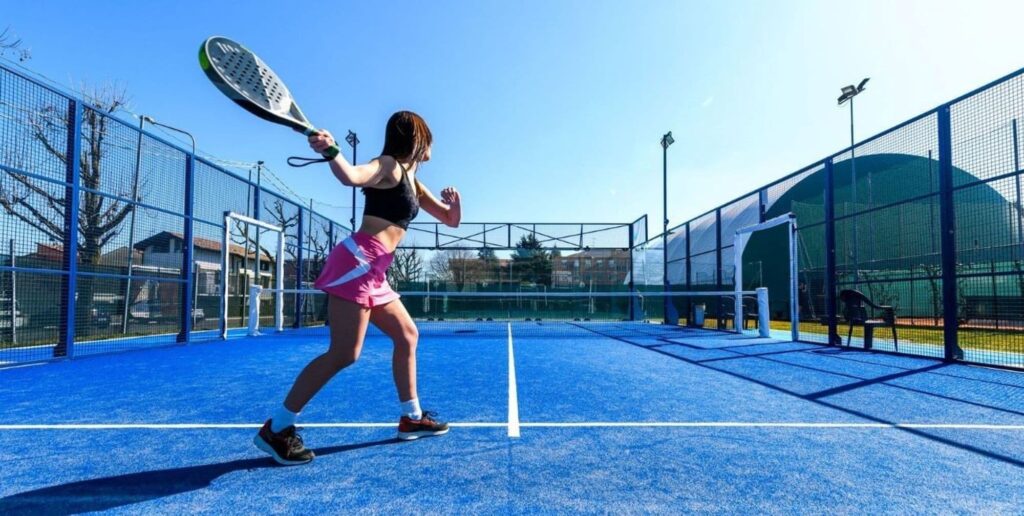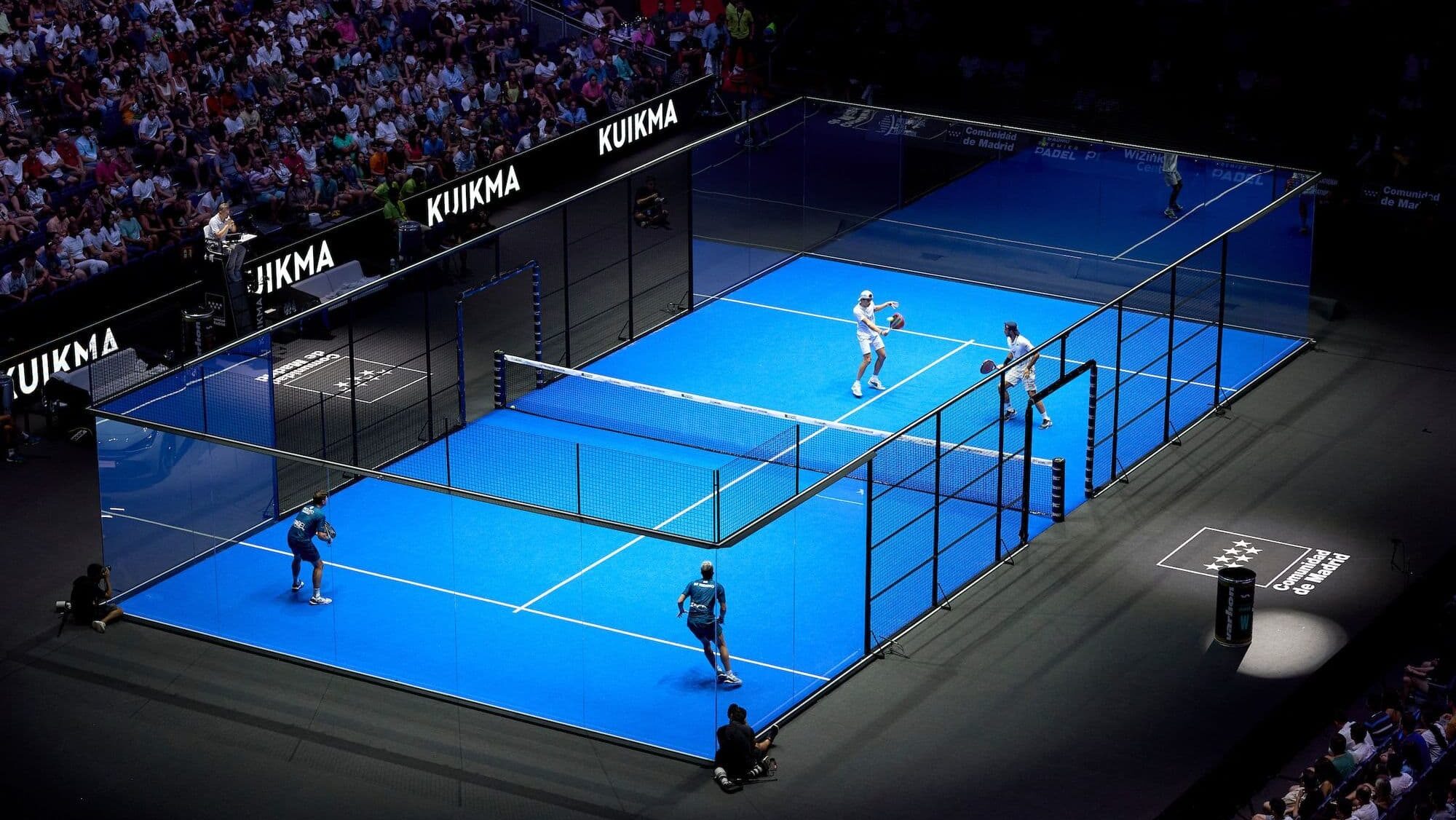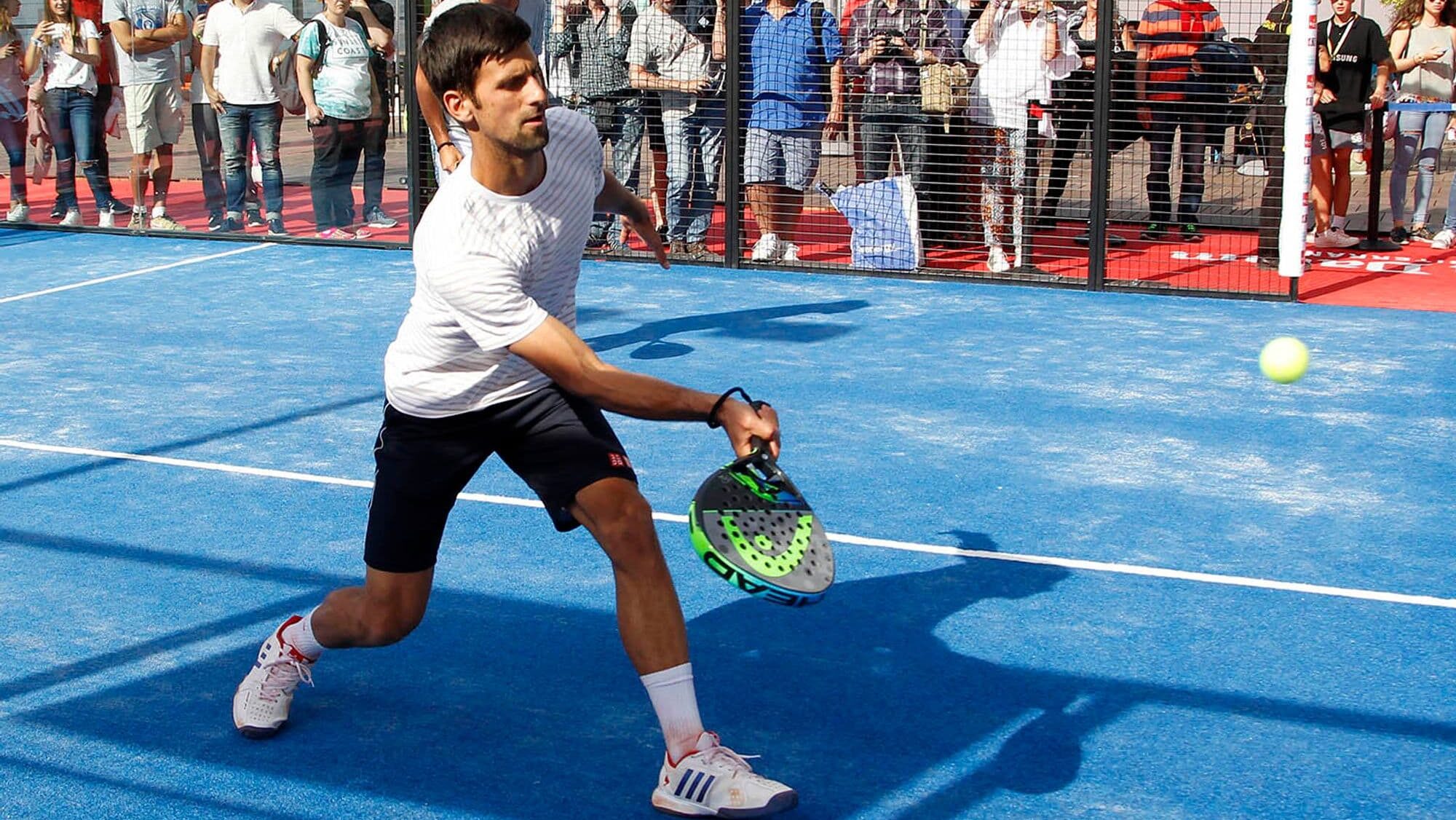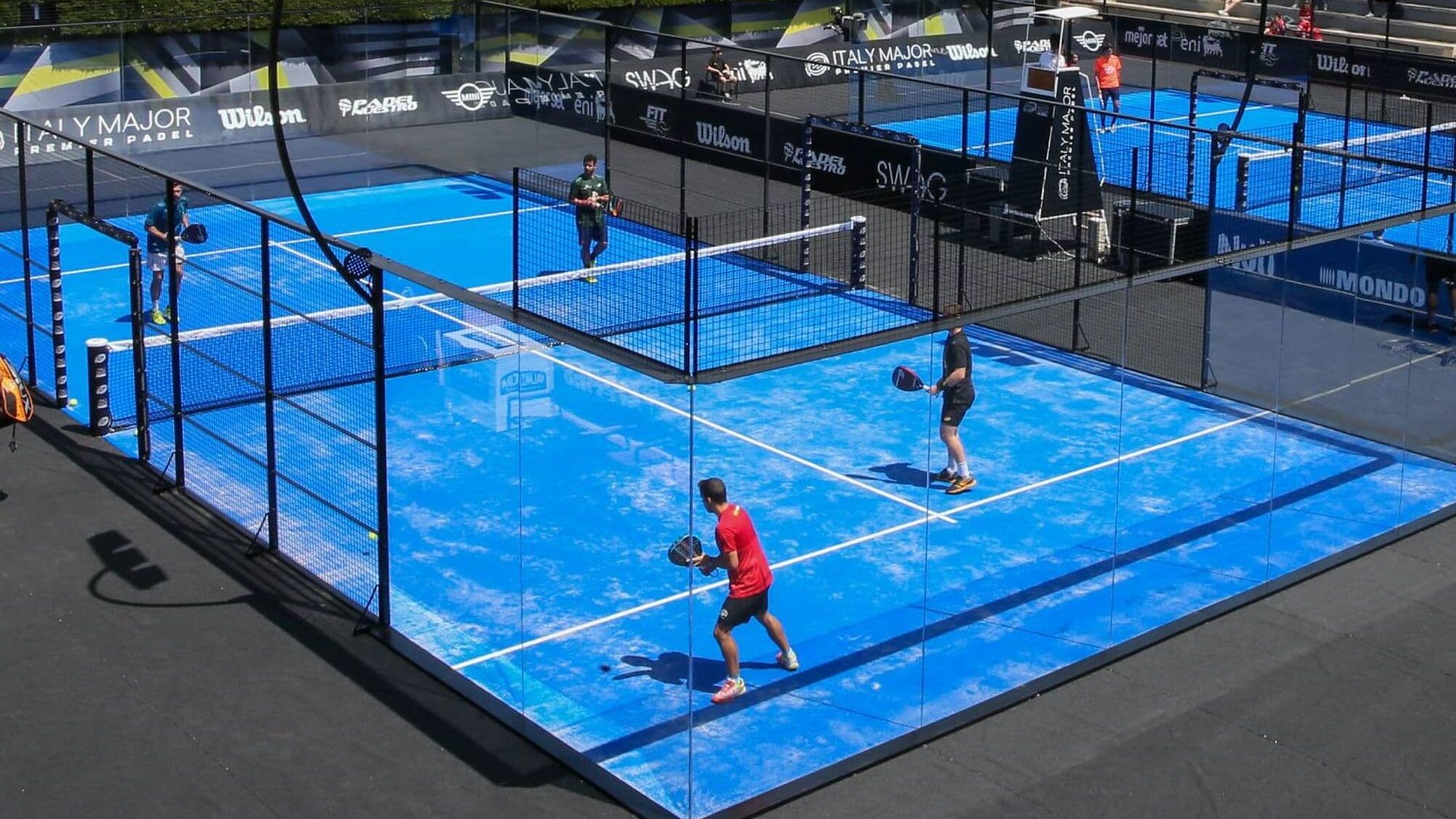Padel is a racket sport that combines elements of tennis and squash. Doubles matches are played on an enclosed court one-third the size of a tennis court. The game originated in Mexico in the 1960s, but gained popularity in Spain before spreading worldwide.
Padel’s basic rules include serving underhand, allowing the ball to bounce once on either side before a volley is allowed, and using solid walls around the court. Players can use the walls to keep the ball in play, adding an extra layer of strategy and excitement.
Padel has become a very popular sport around the world. It has experienced significant growth in recent years, particularly in Europe and South America, as more courts are built and more players play. Professional paddle tours developed, attracting sponsorship and media attention, providing lucrative opportunities for elite players.
Padel has the potential to become more famous and widespread around the world. Its accessibility as a beginner-friendly sport and its thrilling, fast-paced gameplay make it appealing to a wide range of players. Padel is a sport that is expected to grow as the number of people who like it increases and the infrastructure to support it is built.
Moreover, the resilience and versatility of the sport makes it work well in modern urban environments where space is sometimes at a premium. Paddle courts can be built indoors or outdoors in the suburbs or cities, making them accessible to many people.
Padel will expand further globally as it grows in popularity in countries such as the United States and parts of Asia that still need to be discovered. With the support of international federations and groups dedicated to promoting the sport, Padel could develop into a truly global phenomenon in the next few years. With continued investment, promotion and support from players and fans around the world, Padel is positioned to continue to grow and become a significant force in the sports industry.
Origins and early development
The beginning of Padel
Mexican businessman Enrique Corcuera had a vision to develop a new racquet sport accessible to players of all ages and abilities. As a result, Padel was born in Mexico in 1969. Inspired by his own experiences playing racquet sports as a child, Corcuera set out to create a game that combined the best aspects of squash and tennis into a more accessible format for beginners.

Corcuera used his resort space to create the first paddle court in Acapulco, Mexico. The court’s glass and wire barriers allowed players to hit the ball and continue play. The solid walls and small court made it easier for new players to pick up the game and gave it an exciting new dimension.
At the resort of Corcuera, Padel was immediately well-received by tourists and eventually expanded throughout Mexico. But it was in Spain that the sport took root and began to flourish. Spanish businessman Alfonso de Hohenlohe first became aware of Padel during a trip to Mexico in the early 1970s and knew it had potential for success in Spain.
Padel was brought to Spain by De Hohenlohe and was immediately well received. It quickly became a mainstay in bars and resorts across Spain, as the Spanish environment and culture were ideal for the activity. The small size of paddle courts adds to their appeal as they can be built in urban environments where space is limited.
Padel’s rise in popularity in Spain has been fueled by attention from celebrities and professional athletes. The best players emerged from the tournament, which helped Padel gain recognition as a real sport with a passionate fan base.

With millions of players and hundreds of courts spread across the country, Spain remains one of the best padel-playing countries in the world today. Sports are constantly innovating and evolving, with new methods and approaches emerging regularly.
The foundations of Padel’s international success were established in 1969 with its founding in Mexico and the introduction of Alfonso de Hohenlohe to Spain. The founder’s vision and ingenuity allowed Padel to grow into a popular sport now enjoyed by millions around the world.
growth in spain
As its popularity soared in the 1970s and 1980s, Padel became ingrained in Spanish sporting culture and established itself as one of the country’s most loved sports. The explosive growth and widespread popularity of the sport in Spain during this period was fueled by several factors.
Padel’s rapid expansion in Spain in the 1970s and 1980s was driven by several factors, including accessibility, social appeal, club culture, celebrity endorsement, media attention, and government support. By the end of this period, Padel had established itself as a major part of Spanish sporting culture, setting the stage for future growth and success both domestically and globally.

international expansion
Spread throughout Europe and Latin America
From its roots in Mexico, Padel’s globalization has expanded significantly in several Latin American and European countries, including Italy and Sweden. The following important factors have increased Padel’s attractiveness in these areas:
Emergence of non-traditional markets.
Padel’s recent expansion into non-traditional regions such as the Middle East and parts of Asia reflects its growing appeal for its global scale and flexibility in diverse cultural settings. Various factors have influenced these appearances in different places.
Padel’s rising popularity as a social and recreational activity, growth of indoor facilities, expansion of expat communities and tourism, government support, and professional travel are reasons for its recent emergence in non-traditional markets such as the Middle East and select regions. Asia. As sports develop in these regions, they are expected to become increasingly ingrained in local sports cultures and lifestyles.
Factors driving global popularity
Accessibility and sociability
Padel’s friendliness and accessibility – two important qualities that attract players of all ages and genders – give rise to the game’s broad appeal.
Padel’s global appeal is largely due to his sociability and accessibility. It is an activity that people of various ages, genders, and backgrounds can enjoy, as it emphasizes low barriers to entry, inclusiveness, and social contact.
Support from celebrities and professional athletes
Endorsements and endorsements from celebrities and professional athletes have been instrumental in driving interest and investment in Padel, contributing to Padel’s growing popularity and global expansion.

Commercial growth and specialization
League and tournament development
Padel’s commercial growth and professionalization was facilitated by the establishment of leagues and tournaments at both national and international levels. Here’s an overview of how the professional paddle circuit developed:
Sponsorships and Media Coverage
Padel’s profile and the professional opportunities it offered were greatly influenced by increased media coverage and interest from sponsors. Here is an overview of the implications:
Challenges facing Fadel
Regulatory and governance issues
Addressing these legislative and governance issues will require collaboration, communication and a shared commitment to the long-term growth and sustainability of Padel as a global sport. Establishing clear norms, fostering transparency, and supporting inclusivity can promote a more unified and cohesive paddle community across diverse locations and cultures.
Balance between tradition and innovation
Ultimately, the key to balancing tradition and innovation at Padel lies in respecting the sport’s rich heritage while also embracing opportunities for growth and development. By carefully incorporating new ideas and technologies while staying true to its core values, Padel can continue to develop and thrive as a dynamic and inclusive sport for generations to come.

Fadel’s future
technological innovation
Technological advancements could completely change the way Padel is played, viewed and enjoyed by both players and spectators. By embracing and integrating these innovations into the game, Padel can continue to develop and thrive in the digital age. This will attract new players, captivate audiences and cement the sport’s reputation as a vibrant, cutting-edge activity for years to come.
Including potential Olympics.
The possibility of Padel becoming an Olympic sport is an exciting prospect that could have significant implications for the sport and its global profile. What follows is an exploration of the possibility of Olympic inclusion and its implications.
From a humble backyard hobby to a burgeoning global sport, Padel’s journey is a testament to its enduring appeal, accessibility and adaptability. Originating in Mexico in 1969, Padel became popular in Spain and spread throughout Europe, Latin America and beyond, capturing the hearts and imaginations of millions of players and fans around the world.
Fadel has overcome many obstacles and is actively engaged in becoming a popular sport. It attracts players of all ages, genders and skill levels due to its unique blend of athleticism, strategy and friendliness that fosters a sense of community on and off the court.
Padel’s development and innovation potential is limitless as it continues to grow and influence the sports industry. Thanks to technological developments, increasing specialization trends and the possibility of participating in the Olympic Games, Padel is positioned to achieve unprecedented levels of success and fame on the international stage.
Fadel’s journey to look into the future is still ongoing. Through his infectious energy, welcoming spirit, and tireless dedication, Padel uplifts and unites people from all walks of life to improve lives and communities around the world. Padel is a very special and popular sport because it offers a special blend of thrill, camaraderie and joy that transcends boundaries and cultures, whether played competitively or for fun.






